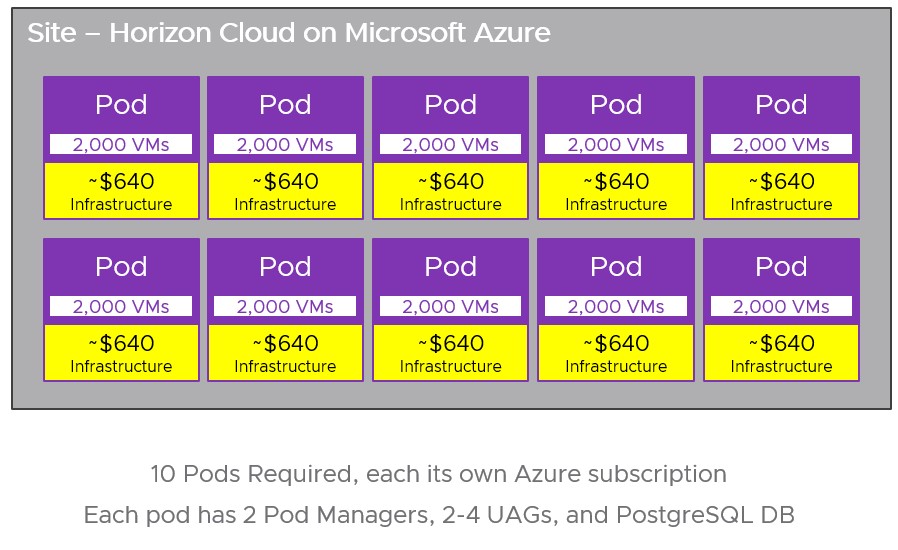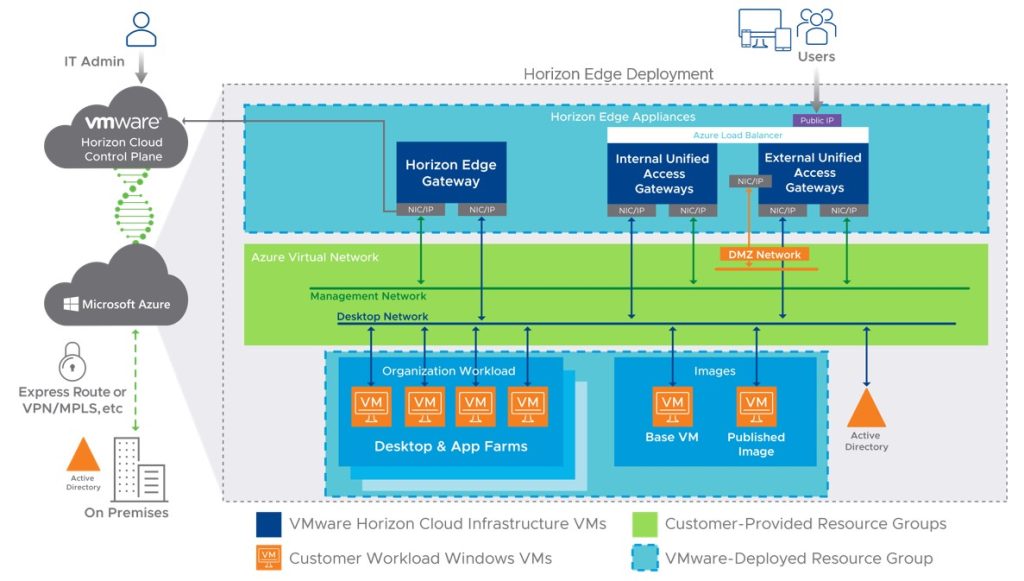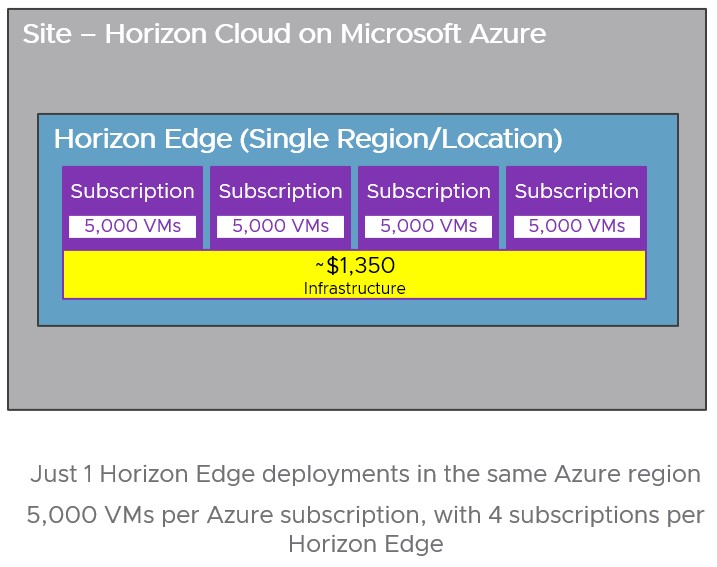In this series, Ron Oglesby will be breaking down the most important new features of our next-gen Horizon Cloud services. These features will not only “fill the gaps” that customers have often seen between on-premises and cloud desktop technologies, but will also give customers more flexibility and new options and tools for managing their virtual desktop environments.
In the first article in this series, we noted several new awesome features we would be reviewing over the coming weeks. Today I want to look at the architectural changes within VMware Horizon Cloud that have led to a huge reduction in infrastructure costs and increased overall scalability.
To those familiar with our existing Horizon infrastructure, you are no doubt aware of the Pod architecture requiring a “pod” for every 2,000 virtual desktops and that each pod needs its own subscription, pod managers, database, and jumpbox.

For a 20-thousand-user environment, the total infrastructure cost (read, overhead) would be approximately $640 per pod, or $6,400 a month ($0.32 PUPM) for the entire 20-thousand-seat environment. This cost is driven primarily by the amount of redundant infrastructure components across subscriptions and the limit of 2,000 virtual machines (VMs) per pod/subscription.

In this new cloud architecture we remove the pod managers, database, and jumpboxes, and we replace them with the Horizon Edge Gateway, which allows for the management of the environment via the VMware Horizon Cloud Control Plane. This architecture also moves these infrastructure functions into the VMware service instead of placing them in your subscription. In addition, the number of VMs supported per subscription has increased to 5,000 from the 2,000 VM limit in the pod models. These changes result in less infrastructure requirements per managed VM, and thus less cost.
A final (and critical) feature of this new Horizon Edge architecture is that you only need one Horizon Edge deployment per site (Azure sites today; stay tuned for more updates soon). And within each Azure site your Edge installation can support up to four separate subscriptions (with up to 5,000 VMs) supporting our 20 thousand virtual machines.

In this model, our 20-thousand-seat environment is now contained in only four subscriptions, using only a single Horizon Edge installation across all the subscriptions and reducing the overhead costs for infrastructure to about $1,350 per month ($0.07 PUPM) from the original scenario above that costs $6,400 per month. Of course each of these sites in the new architecture will still maintain VMware UAGs, but these can be spun up or powered off as utilization dictates.
The increase in scalability from a management standpoint is fantastic. It reduces the number of VMs that are running ($) and reduces the amount infrastructure that admins have to maintain and troubleshoot on a daily basis. But unlike some of our other technology changes, this feature doesn’t just reduce admin workload, it also shows a significant, real cost savings that is easily calculated for your environment.
If you haven’t heard about Horizon Cloud next-gen, it is important to understand that this is a new design and implementation specifically designed for hybrid and multi-cloud environments. This is the future of Horizon, and it’s time to take a deeper look at it. Here are a couple of resources:
For the initial release blog, check out this article: “The Next Generation of VMware Horizon Cloud Is Here!”
Or, to see the requirements and deployment steps, check out our documentation in Tech Zone.
For a comprehensive overview of the most important features of Horizon Cloud next-gen, we encourage you to read all of the blogs in this series:
Looking at the Most Important Features of VMware Horizon Cloud
API First! A Look at the Most Important Features of Horizon Cloud Next-Gen
Thin Edge! A Look at the Most Important Features of Horizon Cloud Next-Gen











